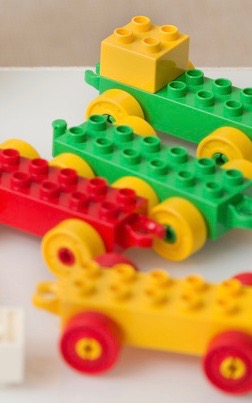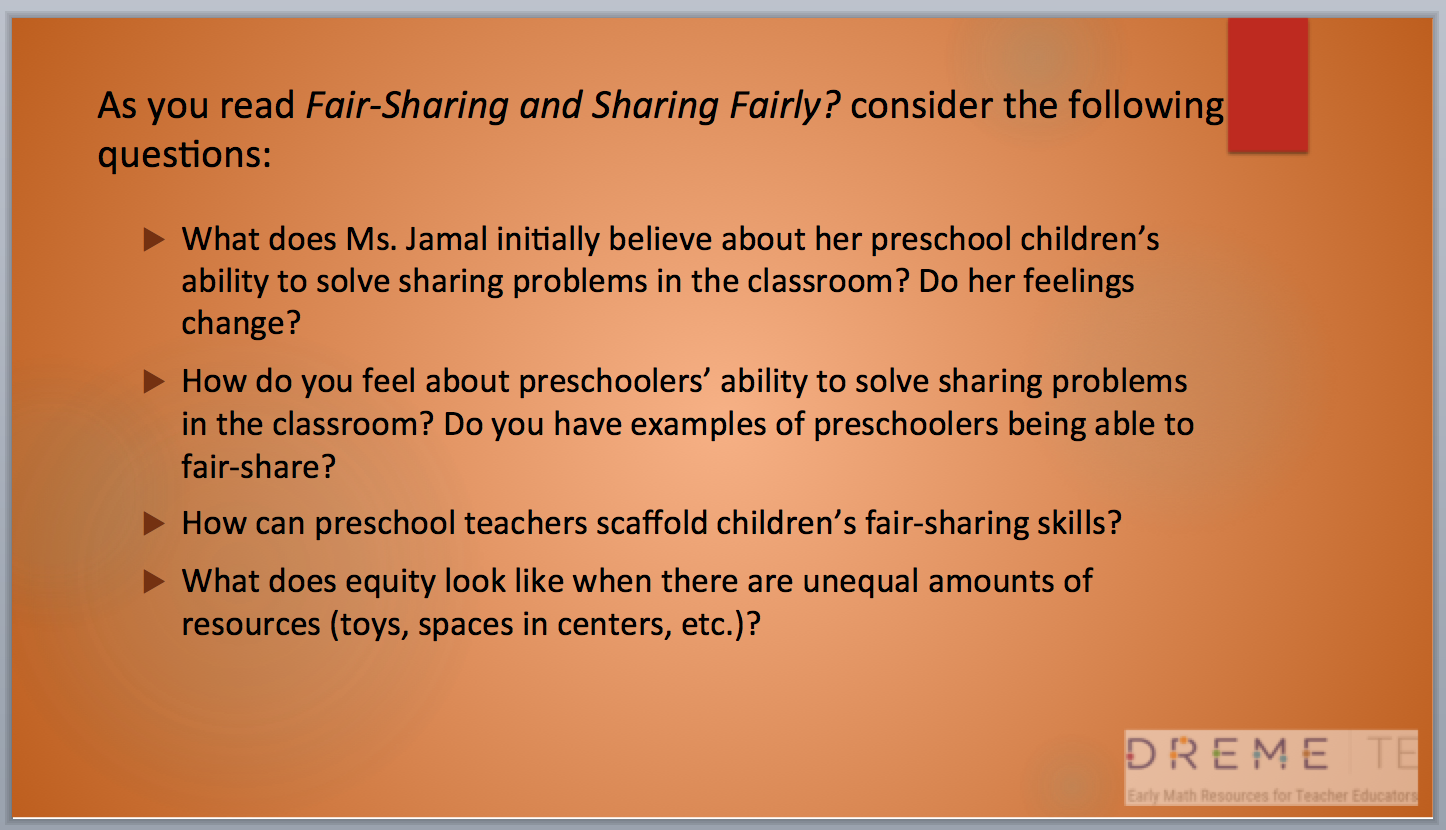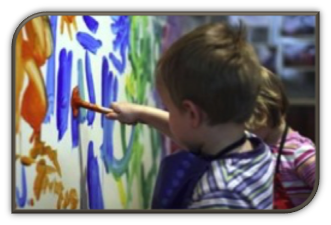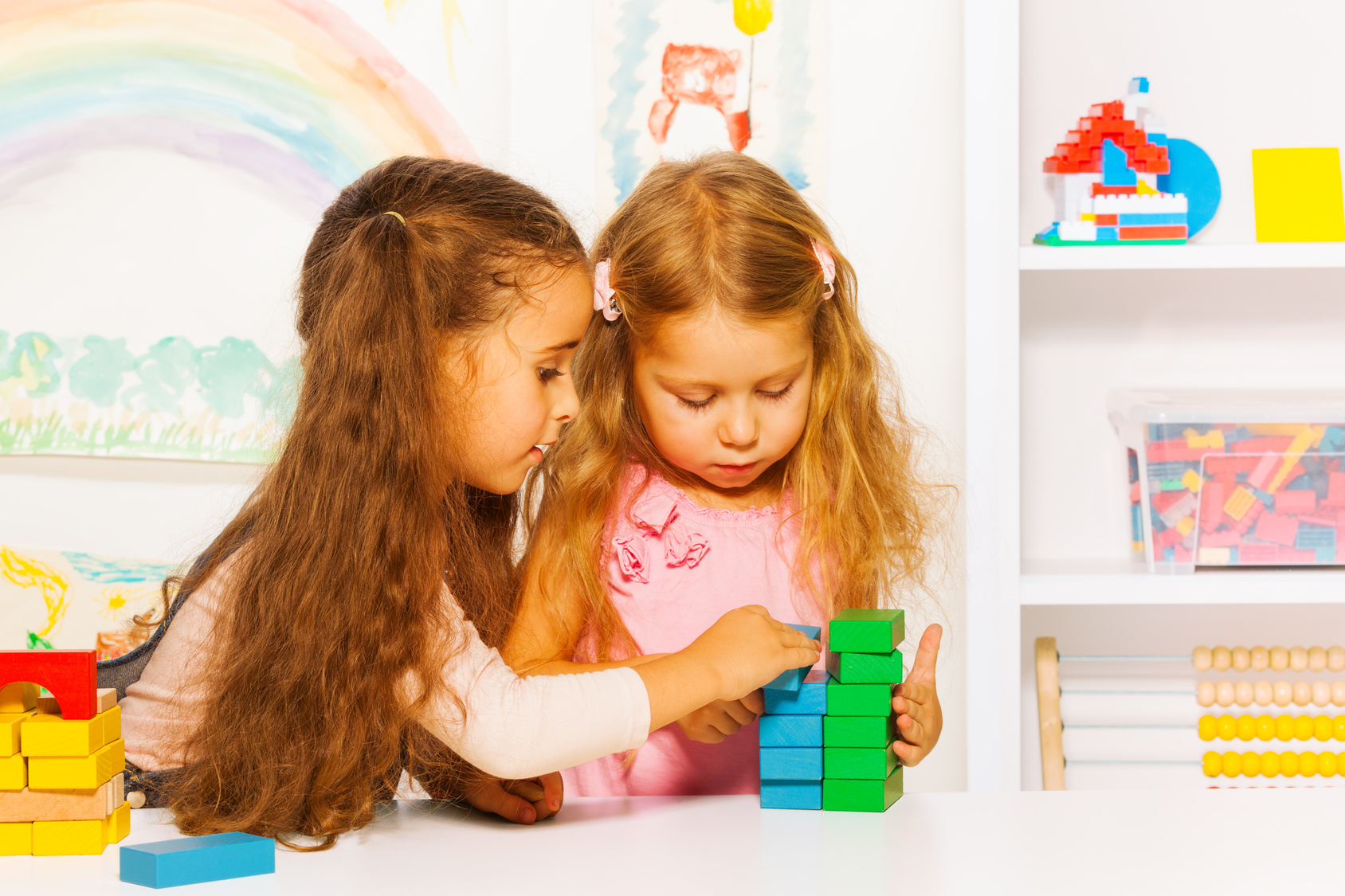We often think of mathematical development and socio-emotional development as two ships passing in the night, existing in the same ocean but not interacting. But, fair-sharing—the sharing of toys or materials in a fashion that is deemed fair by those involved in these social exchanges—belies this metaphor. Mathematics, specifically number and operations, is at the heart of these intensely social interactions. In attempts to make our classrooms engaging but calm, we frequently underestimate children’s abilities in both mathematics and social relations.

As circle time finished, Licette and Ana ran over to the block area and pulled out the big plastic bin of Duplos. Playing with Duplo trains was one of their favorite activities in the morning. They worked quickly to put together the gray oval train track. After putting the last piece in place, they began pulling out train parts from the bin. There were lots of trains, a handful of locomotive cabins and steam engine tops, and three or four cow catchers and side tippers, their favorites.
Ms. Jamal was walking through the classroom; the children had settled into activities and the atmosphere was filled with happy chatter. She was pleased with the progress children had made this year in learning how to solve conflicts over toys and materials, but she still directed most of these negotiations. She knew sharing could be challenging for children under some circumstances. She feared the children just weren’t ready to take full responsibility. To scaffold interactions that required sharing, she set timers, divided up sets of toys, and restricted the number of children in each area of the classroom.
As she approached the block area, she thought to herself that she really hadn’t heard much arguing coming from Licette and Ana over the year even though they were two of the youngest in the class. They just didn't seem to be the sort of children who would fight over toys.
She stood, watching the girls spread the train parts out on the rug, making piles of similar parts. Licette said, “Where are all the cow catchers? There’s only three! I need three for my train!” Ana replied forcefully, “I need some! You can’t have all of them.” As Ms. Jamal began to open her mouth to suggest bringing over the timer, Licette said, “How ‘bout we see how many other parts we get?” Ana replied a bit reluctantly, “Okay.” As Ms. Jamal watched, beginning with the trains, each girl took one at a time until the pile was gone. There were a lot of trains, so they ended up with quite a few.
As they moved through the piles, dividing them, Ms. Jamal marveled at their problem-solving skills. They divided the piles up one by one just like the trains, and counted to confirm the equal split. Whenever a pile had an uneven number of train parts, after the split they set the extra part aside. When they finished, they had four extra parts set aside. “Two for both of us!” Ana said excitedly. “I want the cow catcher first, you can have it after me.” Licette acknowledged, “Okay, but I get the second” and stood up to run and get the timer and ran smack into Ms. Jamal’s legs. She looked up startled, and then laughed. Ms. Jamal laughed as well, patted Licette on the shoulder and moved aside.
As Ms. Jamal moved on to other areas of the classroom, she was distracted by the conversation and actions she had just witnessed. It made her think of the meaning of fair—after all, Ana got the first turn with the extra cow catcher: how was that fair? Or, unfair, for that matter? Is fair always equal? And, she thought of the mathematical problem solving that she had observed. Wow, was that sophisticated! One-to-one correspondence, number word order, cardinality, comparison of sets and quantities, subitizing, grouping, composition and decomposition, and, dare she think it... division? It also slowly dawned on her that the girls had accomplished these very sophisticated tasks... all by themselves. She realized that all children, even the youngest, can use math to solve problems. Her early work of modeling social interactions and exposing children to rich mathematical experiences through intentional teaching and support during play had provided children with the knowledge and skills to successfully navigate classroom sharing conflicts. Now it was their turn.



